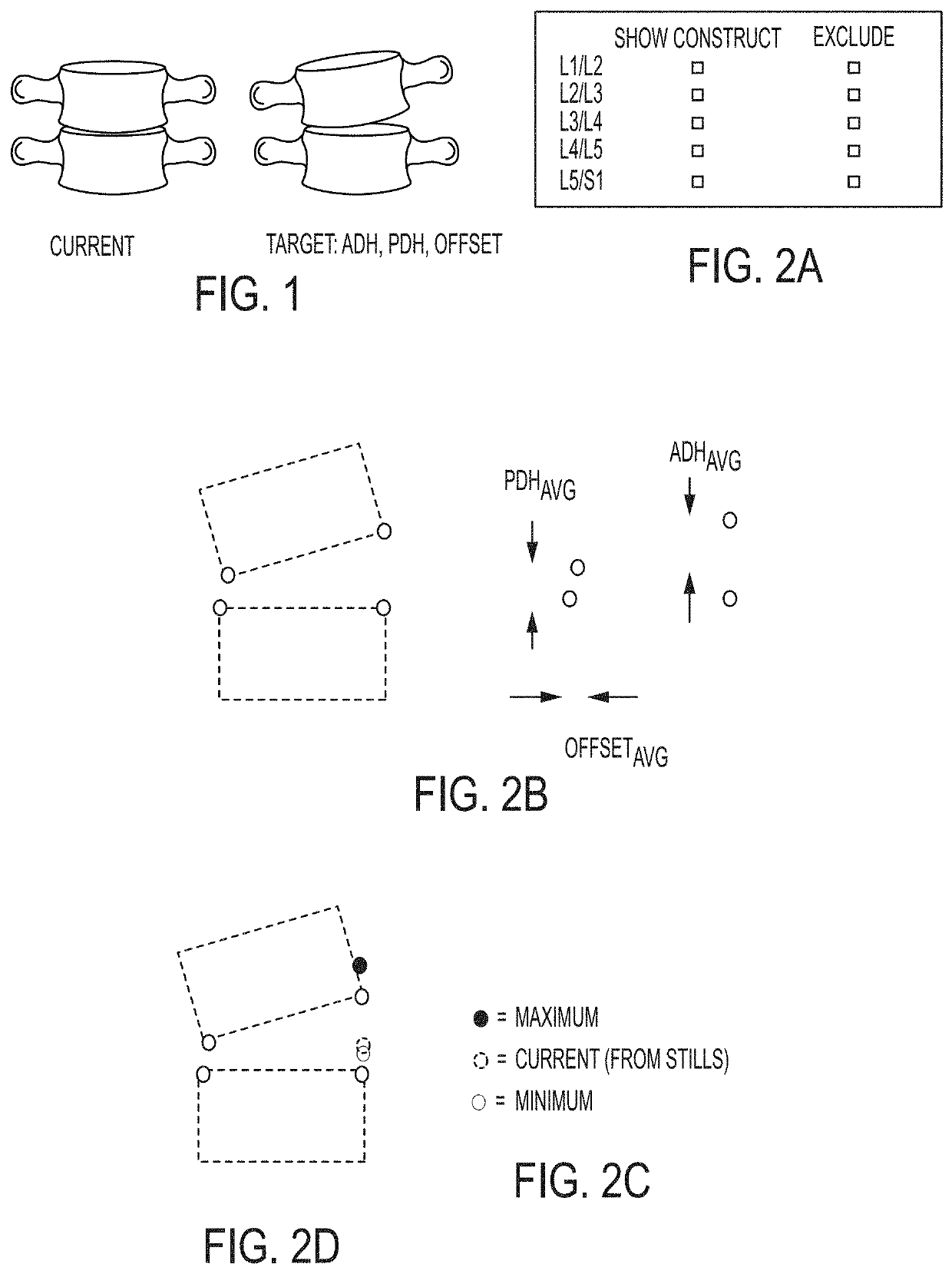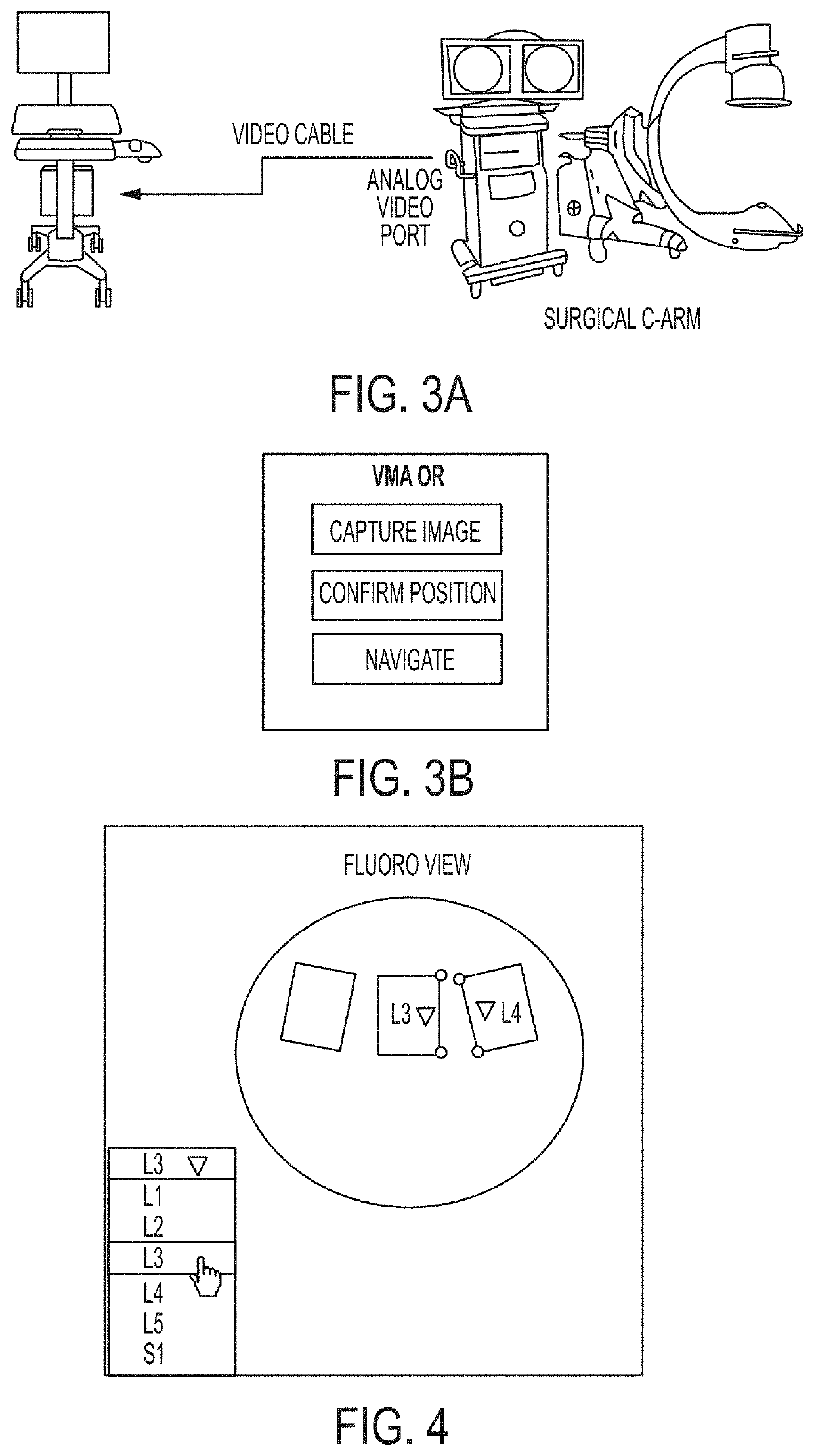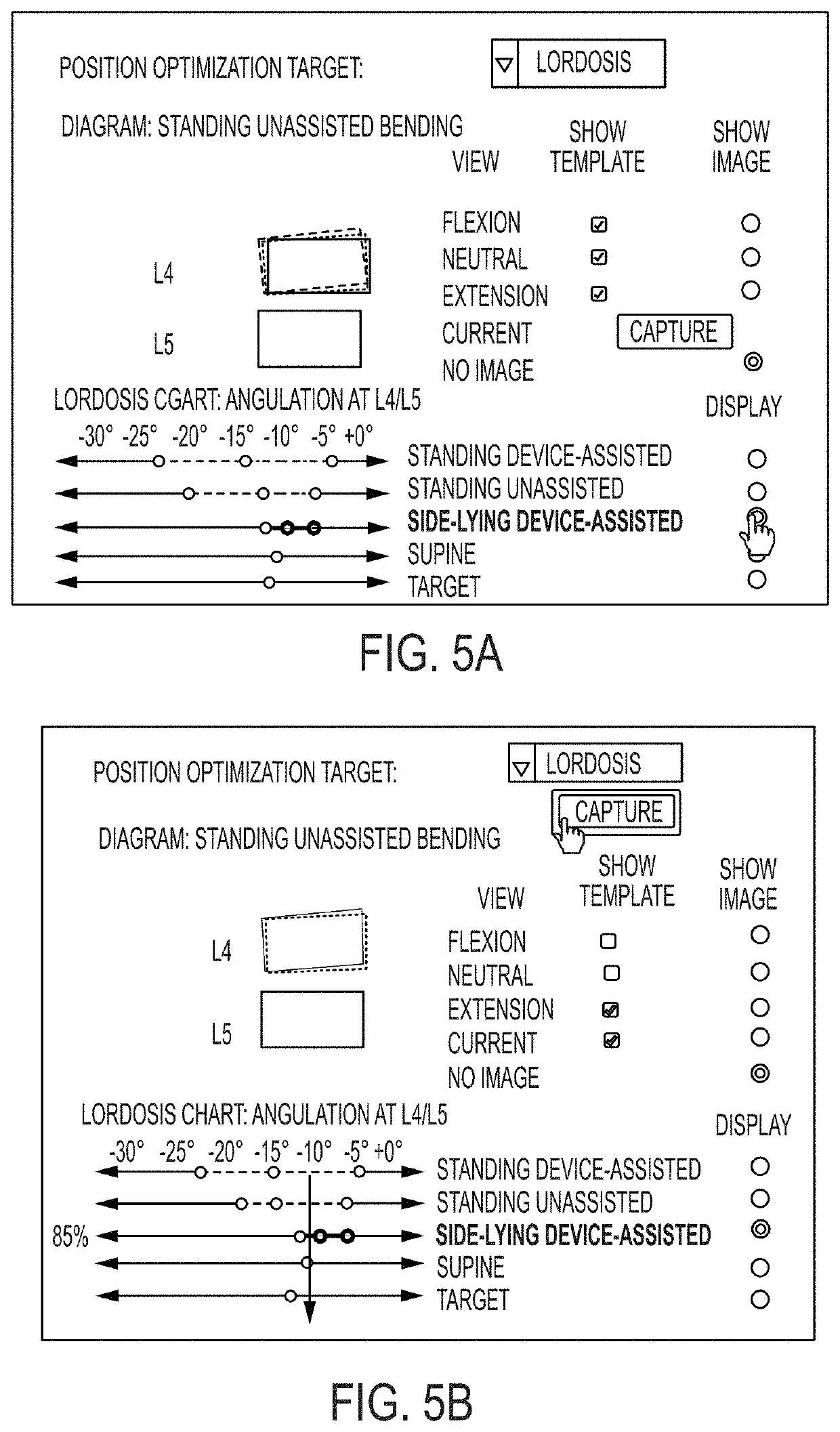Methods for data processing for intra-operative navigation systems
a data processing and intra-operative technology, applied in the field of intra-operative navigation systems, can solve the problems of severe limitations on the functional ability and affecting the quality of life of people,
- Summary
- Abstract
- Description
- Claims
- Application Information
AI Technical Summary
Benefits of technology
Problems solved by technology
Method used
Image
Examples
Embodiment Construction
[0031]One aspect of the present disclosure relates to a method for determining the target geometry of a spinal fusion surgical construct. Radiographic images of a patient's spine are acquired via any radiographic imaging method. From these images, specific measurements can be collected at levels not targeted for surgery from images collected while a patient is standing in a neutral position, including: anterior disc height, posterior disc height, offset (i.e. intervertebral translation), and / or angulation. These measurements are then used to generate a patient-specific average from the levels imaged but not targeted for surgery. These averages are then used to determine a set of target parameters for a surgical construct. These target parameters may then be used as the input to a surgical navigation system or may be used by the surgeon during surgery for device selection or to assist with the surgery. FIG. 1 illustrates two vertebral bodies in a current orientation and a target orie...
PUM
 Login to View More
Login to View More Abstract
Description
Claims
Application Information
 Login to View More
Login to View More - R&D
- Intellectual Property
- Life Sciences
- Materials
- Tech Scout
- Unparalleled Data Quality
- Higher Quality Content
- 60% Fewer Hallucinations
Browse by: Latest US Patents, China's latest patents, Technical Efficacy Thesaurus, Application Domain, Technology Topic, Popular Technical Reports.
© 2025 PatSnap. All rights reserved.Legal|Privacy policy|Modern Slavery Act Transparency Statement|Sitemap|About US| Contact US: help@patsnap.com



